Microsoft powerpoint - stds.pptm
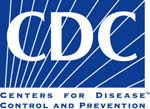

STD Treatment Guidelines
Steve Randall, PA
The Medical Practice Association of KUSM-W - HIV Program
HIV Educator, The Kansas AIDS Education and Training Center
The University of Kansas School of Medicine - Wichita
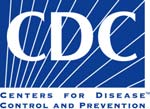
STD Prevention and Control
• Education and counseling to reduce risk of
• Detection of asymptomatic and/or
symptomatic persons unlikely to seek evaluation
• Effective diagnosis and treatment
• Evaluation, treatment, and counseling of
• Preexposure vaccination--hepatitis A, B
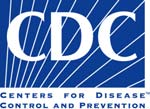
• Prevention messages tailored to the client's
personal risk; interactive counseling approaches are effective
• Despite adolescents greater risk of STDs,
providers often fail to inquire about sexual behavior, assess risk, counsel about risk reduction, screen for as infection
• Specific actions necessary to avoid acquisition or
transmission of STDs
• Clients seeking evaluation or treatment for STDs
should be informed which specific tests will be performed
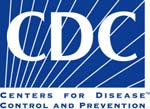
Male Condoms
• Consistent/correct use of latex condoms are
effective in preventing sexual transmission of HIV infection and can reduce risk of other STDs
• Likely to be more effective in prevention of
infections transmitted by fluids from mucosal surfaces (GC,CT, trichomonas, HIV) than those transmitted by skin-skin contact (HSV,HPV, syphilis, chancroid)
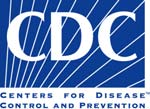
• N-9 vaginal spermicides are not effective in
preventing CT, GC, or HIV infection
• Frequent use of spermicides/N-9 have been
associated with genital lesions
• Spermicides alone are not recommended for
STD/HIV prevention
• N-9 should not be used a microbicide or
lubricant during anal intercourse
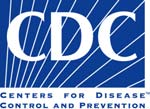
• STD/HIV sexual risk assessment and client-
centered prevention counseling
• Annual STD screening for MSM at risk
-HIV and syphilis serology
-Urethral cx or NAAT, GC/CT
-Pharyngeal cx, GC (oro-genital)
-Rectal cx, GC/CT (receptive anal IC)
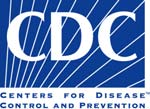
Early HIV Infection
• Medical/sexual history, previous STD
• PX, pelvic (pap, wet mount), GC, CT
• Syphilis serology
• CD4 count, HIV viral load
• CBC, blood chemistry
• PPD, urinalysis, CXR
• Hepatitis A, B, C serology
• Diagnosis based on medical history and
physical examination often inaccurate
• Serologic test for syphilis
• Culture/antigen test for herpes simplex
• Haemophilus ducreyi culture in settings
where chancroid is prevalent
• Biopsy may be useful
First Clinical Episode
Acyclovir 400 mg tid
Famciclovir 250 mg tid
Valacyclovir 1000 mg bid
Duration of Therapy 7-10 days
Genital Herpes
Acyclovir 400 mg three times daily x 5 days
Acyclovir 800 mg twice daily x 5 days
Famciclovir 125 mg twice daily x 5 days
Valacyclovir 500 mg twice daily x 3-5 days
Valacyclovir 1 gm orally daily x 5 days
Acyclovir 400 mg bid
Famciclovir 250 mg bid
Valacyclovir 500-1000 mg daily
Treatment in Pregnancy
• Available data do not indicate an increased risk
of major birth defects (first trimester)
• Limited experience on pregnancy outcomes with
prenatal exposure to valacyclovir or famciclovir
• Acyclovir may be used with first episode or
severe recurrent disease
• Risk of transmission to the neonate is 30-50%
among women who acquire HSV near delivery
• Natural history of infection, recurrences,
asymptomatic shedding, transmission risk
• Individualize use of episodic or suppressive
• Abstain from sexual activity when lesions or
prodromal symptoms present
• Risk of neonatal infection
Primary, Secondary, Early Latent
Benzathine Penicillin G, 2.4 million units IM
Doxycycline 100 mg twice daily x 14 days
Ceftriaxone 1 gm IM/IV daily x 8-10 days (limited
Azithromycin 2 gm single oral dose (preliminary data)
*Use in HIV-infection has not been studied
Response to Treatment
• No definitive criteria for cure or failure are established
• Re-examine clinically and serologically at 6 and 12
• Consider treatment failure if signs/symptoms persist or
sustained 4x increase in nontreponemal test
• Treatment failure: HIV test, CSF analysis; administer
benzathine pcn weekly x 3 wks
• Additional therapy not warranted in instances when titers
don't decline despite nl CSF and repeat therapy
Benzathine penicillin G 2.4 million units IM at one week intervals x 3 doses
Doxycycline 100 mg orally twice daily
Tetracycline 500 mg orally four times daily
Duration of therapy 28 days; close clinical and
follow-up; data to support alternatives to pcn are
• Clinical evaluation of tertiary disease (aorititis,
• CSF analysis: neurologic or ophthalmic signs/sx,
active tertiary disease, tx failure, HIV infection
• Some experts recommend CSF exam in those with
nontreponemal titer of >1:32
• Pharmacologic considerations suggest an interval of
10-14 days between benz pen doses may be acceptable before restarting treatment course in nonpregnant patients
Management of Sex Partners
• At risk- 3 mo + sx for primary, 6 mo + sx for
secondary, one yr for early latent
• Exposure to primary, secondary, or early latent
within 90 days, tx presumptively
• Exposure to primary, secondary, or early latent >
90 days, tx presumptively if serology not available
• Exposure to latent syphilis who have high
nontreponemal titers > 1:32, consider presumptive tx for early syphilis
Treatment in Pregnancy
• Screen for syphilis at first prenatal visit; repeat RPR third
trimester/delivery for those at high risk or high prevalence areas
• Treat for the appropriate stage of syphilis
• Some experts recommend additional benzathine penicillin
2.4 mu IM after the initial dose for primary, secondary, or early latent syphilis
• Management and counseling may be facilitated by
sonographic fetal evaluation for congenital syphilis in the second half of pregnancy
Infants with Seroreactive Mothers
• Nontreponemal test on infant serum
• Examination (nonimmune hydrops, jaundice,
HSM, rhinitis, rash)
• Pathologic exam of placenta or umbilical cord
(fluorescent antitreponemal antibody)
• Darkfield or DFA of suspicious lesions or
Proven/highly probable disease
• Abnormal physical exam consistent with
congenital syphilis
• Nontreponemal titer 4X > maternal titer or +
• Evaluation: CSF exam, CBC; other tests as
clinically indicated--long bone films, LFTs, cranial US, eye exam, auditory brain stem response
Proven/highly probable disease
Aqueous crystalline penicillin G 100,000-
150,000 units/kg/day, administered as 50,000 units/kg/dose IV q 12 hours during the first 7 days and thereafter q 8 hours for 10 days
Procaine penicillin G 50,000 units/kg/dose IM in
a single daily dose for 10 days
• Clinical/serologic evaluation q 2-3 mo
• RPR should decline by 3 mo, nonreactive at
• Stable or increasing titers after 6-12 mo--CSF
analysis/parenteral pcn X 10 d
• Reactive treponemal/RPR after 18 mo re-
evaluate and treat for congenital syphilis
Older Infants and Children
• Review records and maternal serology-
congenital vs acquired
• Evaluation- CSF analysis, CBC/pts; +/- long
bone films, auditory brain stem response
• Treatment- Aqueous pcn G 50,000 units/kg q
4-6 hours for 10 days
Azithromycin 1 gm orally
Ceftriaxone 250 mg IM in a single dose
Ciprofloxacin 500 mg twice daily x 3 days
Erythromycin base 500 mg tid x 7 days
• Re-examination 3-7 days after treatment
• Time required for complete healing
related to ulcer size
• Lack of improvement: incorrect
diagnosis, co-infection, non-compliance, antimicrobial resistance
• Resolution of lymphadenopathy may
Management of Sex Partners
Examine and treat partner whether
symptomatic or not if partner contact <
10 days prior to onset
October 28, 2004
Rare Infection a Risk to Gay &
Bisexual Men in US
Lymphogranuloma Venereum
A recent outbreak of the disease in gay and bisexual men in the Netherlands has brought about a concern that it will be overlooked in the US as doctors are not required to report these infections to local health departments in US
LGV primary lesion
Chronic lymphogranuloma venereum in female. Genital elephantiasis
Doxycycline 100 mg twice daily for 21 days
Erythromycin base 500 mg four times daily for 21 days
Doxycycline 100 mg twice daily
Trimethoprim-sulfamethoxazole 800 mg/160
Minimum treatment duration three
Ciprofloxacin 750 mg twice daily
Erythromycin base 500 mg four times daily
Azithromycin 1 gm orally weekly
Minimum treatment duration three
• Mucopurulent or purulent discharge
• Gram stain of urethral secretions > 5 WBC
per oil immersion field
• Positive leukocyte esterase on first void urine
or >10 WBC per high power field
Empiric treatment in those with high risk
who are unlikely to return
Azithromycin 1 gm in a single dose
Doxycycline 100 mg bid x 7 days
• Objective signs of urethritis
• Re-treat with initial regimen if non-compliant
or re-exposure occurs
• Intraurethral culture for trichomonas
• Effective regimens not identified in those with
persistent symptoms without signs
Metronidazole 2 gm single dose
Erythromycin base 500 mg qid x 7d
Erythromycin ethylsuccinate 800 mg qid x
• Annual screening of sexually active women
• Annual screening of sexually active women
> 25 yrs with risk factors
• Sexual risk assessment may indicate more
frequent screening for some women
• Rescreen women 3-4 months after treatment
due to high prevalence of repeat infection
Azithromycin 1 gm single dose
Doxycycline 100 mg bid x 7d
Treatment in Pregnancy
Erythromycin base 500 mg qid for 7 days
Amoxicillin 500 mg three times daily for 7 days
Erythromycin base 250 mg qid for 14 days
Erythromycin ethylsuccinate 800 mg qid for 14 days
Erythromycin ethylsuccinate 400 mg qid for 14 days
Azithromycin 1 gm in a single dose
Gonococcal urethritis
Disseminated gonorrhea –
skin lesion
Cervix, Urethra, Rectum
Ceftriaxone 125 IM
Ciprofloxacin 500 mg
Ofloxacin 400 mg/Levofloxacin 250 mg
PLUS Chlamydial therapy if infection not ruled out
Cervix, Urethra, Rectum
Spectinomycin 2 grams IM in a single dose
Single dose cephalosporin (cefotaxime 500 mg)
Single dose quinolone (gatifloxacin 400 mg, lomefloxacin 400 mg, norfloxacin 800 mg)
PLUS Chlamydial therapy if infection not ruled
Ceftriaxone 125 IM in a single dose
Ciprofloxacin 500 mg in a single dose
PLUS Chlamydial therapy if infection not ruled
Treatment in Pregnancy
• Cephalosporin regimen
• Women who can't tolerate cephalosporin
regimen may receive 2 g spectinomycin IM
• No quinolone or tetracycline regimen
• Erythromycin or amoxicillin for presumptive or
diagnosed chlamydial infection
Disseminated Gonococcal
Ceftriaxone 1 gm IM or IV q 24 hr
Cefotaxime or Ceftizoxime 1 gm IV q8 hr
Ciprofloxacin 400 mg IV q 12
Ofloxacin 400 mg IV q 12
Levofloxacin 250 mg IV daily
Sporadic, infrequent
Likely C albicans
Butoconazole, clotrimazole, miconazole,
nystatin, tioconazole, terconazole
Oral regimen
Fluconazole 150 mg in a single dose
• Four or more symptomatic episodes/year
• Vaginal culture useful to confirm diagnosis
and identify unusual species
• Initial regimen of 7-14 days topical therapy or
fluconazole 150 mg (repeat 72 hr)
• Maintenance regimens- clotrimazole,
ketoconazole, fluconazole, itraconazole
• Non-albicans VVC- longer duration of therapy
with non-azole regimen
Management of Sex Partners
• Treatment not recommended
• Treatment of male partners does not
reduce frequency of recurrences in the female
• Male partners with balanitis may benefit
Treatment in Pregnancy
• Only topical intravaginal
regimens recommended
• Most specialists recommend 7
Metronidazole 2 gm orally in a single dose
Metronidazole 500 mg twice a day for 7 days
Metronidazole 2 gm orally in a single dose
Management of Sex Partners
• Sex partners should be treated
• Avoid intercourse until therapy is
completed and patient and partner are asymptomatic
Metronidazole 500 mg twice daily for 7 days
Metronidazole gel 0.75%, 5 g intravaginally
once daily for 5 days
Clindamycin cream 5%, 5 g intravaginally qhs
Treatment in Pregnancy
Metronidazole 250 mg three
times daily for 7 days
Clindamycin 300 mg twice daily
Management of Sex Partners
Woman's response to therapy and
the likelihood of relapse or
recurrence not affected by
treatment of sex partner
Pelvic Inflammatory Disease
Minimum Diagnostic Criteria
Uterine/adnexal tenderness or cervical motion
Additional Diagnostic Criteria
Oral temperature >38.3 C
Cervical CT or GC
WBCs/saline microscopy
Pelvic Inflammatory Disease
Definitive Diagnostic Criteria
• Endometrial biopsy with histopathologic
evidence of endometritis
• Transvaginal sonography or MRI showing thick
fluid-filled tubes
• Laparoscopic abnormalities consistent with PID
Pelvic Inflammatory Disease
• Surgical emergencies not excluded
• Clinical failure of oral antimicrobials
• Inability to follow or tolerate oral regimen
• Severe illness, nausea/vomiting, high fever
• Tubo-ovarian abscess
Pelvic Inflammatory Disease
Parenteral Regimen A
Cefotetan 2 g IV q 12 hours
Cefoxitin 2 g IV q 6 hours
Doxycycline 100 mg orally/IV
Pelvic Inflammatory Disease
Oral Regimen A
Ofloxacin 400 mg twice daily for 14 days
Levofloxacin 500 mg once daily for 14 days
WITH OR WITHOUT
Metronidazole 500 mg twice daily for 14 days
Pelvic Inflammatory Disease
Management of Sex Partners
• Male sex partners of women with PID
should be examined and treated for sexual contact 60 days preceding pt's onset of symptoms
• Sex partners should be treated empirically
with regimens effective against CT and GC
• Gram stain smear of urethral exudate for
diagnosis of urethritis
• Intraurethral culture or nucleic acid
amplification test for GC and CT
• Examination of first void uncentrifuged
urine for WBCs if urethral gram stain negative
Infection likely due to GC or CT
Ceftriaxone 250 mg IM in a single dose
Doxycycline 100 mg twice daily for 10 days
Infection likely due to enteric organisms or
age > 35
Ofloxacin 300 mg twice daily for 10 days
Levofloxacin 500 mg once daily for 10 days
• Primary goal for treatment of visible warts is the
removal of symptomatic warts
• Therapy may reduce but probably does not
eradicate infectivity
• Difficult to determine if treatment reduces
–No laboratory marker of infectivity
–Variable results utilizing viral DNA
Podofilox 0.5% solution or gel
Imiquimod 5% cream
Podophyllin resin 10-25%
Trichloroacetic or Bichloroacetic acid 80-90%
Treatment in Pregnancy
• Imiquimod, podophyllin, podofilox should not be
used in pregnancy
• Many specialists advocate wart removal due to
possible proliferation and friability
• HPV types 6 and 11 can cause respiratory
papillomatosis in infants and children
• Preventative value of cesarean section is
unknown; may be indicated for pelvic outlet obstruction
Cervical Cancer Screening
Women with History of STDs
• Women with STD hx may be at increased
risk of cervical cancer
• Clinics that offer pap screening without
colposcopic f/u should arrange for referral
• Management of abnormal pap provided per
Interim Guidelines for Management of Abnormal Cervical Cytology (NCI Consensus Panel)
• Emerging data support HPV testing for the
triage of women with ASCUS Pap tests
Vaccine Preventable STDs
Hepatitis A
• Illegal drug users
• Chronic liver disease, hepatitis
B and C infection
Vaccine Preventable STDs
Hepatitis B
• History of STD, multiple sex partners,
sexually active MSM
• Illegal drug use
• Household members, sex partners of those
with chronic hepatitis B
• Hemodialysis, occupational blood
• Pruritus or lice or nits on pubic hair
• Decontaminate bedding and clothing
• Recommended regimens
– Permethrin 1%
– Lindane 1% shampoo
– Pyrethrins with piperonyl butoxide
• Re-treatment may be necessary if sx persist
• Treatment of sex partners within the last month
• Predominant symptom is pruritus
• Recommended regimen
Permethrin cream 5%
• Alternative regimen
Lindane 1% or Invermectin 200 ug/kg, repeat in 2 wks
• Sex partners and household contacts within the
preceding month should be treated
• Cultures for GC and CT from sites of
penetration; if Nucleic Acid Amplification Test (NAAT)is used, positive test should be confirmed by a second FDA licensed NAAT utilizing a different primer sequence
• Wet mount and culture for trichomonias
• HIV, hepatitis and syphilis serology
• Suggested preventative therapy
-Postexposure hepatitis B vaccination
-Empiric regimen for chlamydia,
gonorrhea, trichomonas, and BV
• Efficacy of antimicrobial regimens in the
prevention of genitourinary infections after sexual assault has not been evaluated
Source: http://www.kaetc.org/slides/dbh_stdtreatment_guidelines.pdf
2014 aha/acc/hrs guideline for the management of patients with atrial fibrillation: executive summary: a report of the american college of cardiology/american heart association task force on practice guidelines and the heart rhythm society
CLINICAL PRACTICE GUIDELINE 2014 AHA/ACC/HRS Guideline forthe Management of Patients WithAtrial Fibrillation: Executive Summary A Report of the American College of Cardiology/American Heart Association Task Force on Practice Guidelines and the Heart Rhythm Society Developed in Collaboration With the Society of Thoracic Surgeons Craig T. January, MD, PHD, FACC, Chair Ralph L. Sacco, MD, FAHAy
pri.ir
JOINT FAO/WHO FOOD STANDARDS PROGRAMME CODEX ALIMENTARIUS COMMISSION Geneva, Switzerland, 2-7 July 2001 REPORT OF THE 20th SESSION OF THE CODEX COMMITTEE ON PROCESSED FRUITS AND VEGETABLES Washington, D.C., United States of America 11-15 September 2000 Note: This report includes Codex Circular Letter CL 2000/39-PFV.